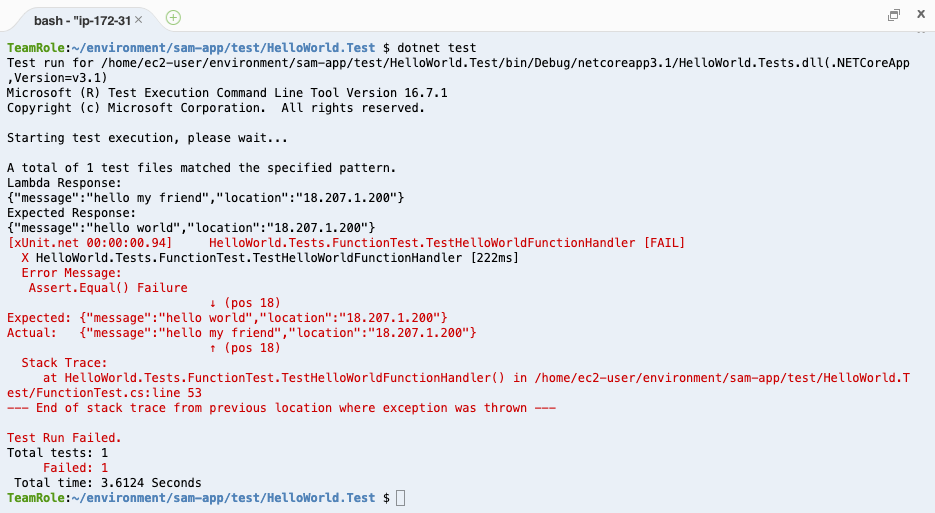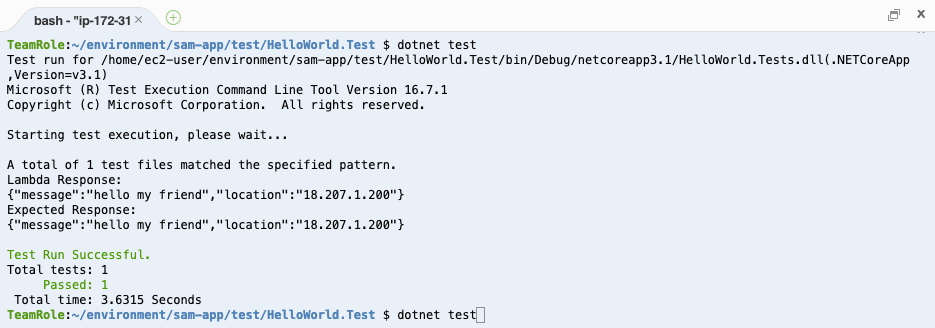Run the unit tests
As you typically would, with any software project, running the unit tests locally is no different for Serverless applications. Developers run them before pushing changes to a code repository. So, go ahead and run the unit tests for your project.
This project uses the xUnit.net framework for running the unit tests, but you can chose any other framework. SAM doesn’t enforce any particular one. You can continue to have the same unit testing workflow that you do in a non-serverless application.
In the terminal, run this command from the sam-app/test/HelloWorld.Test folder to run the unit tests:
cd ~/environment/sam-app/test/HelloWorld.Test
dotnet restore
dotnet test
The tests should fail. This is expected!

Fix the unit test
Makes sense right? We changed the response message to hello my friend and the unit test was expecting hello world. This is an easy fix, let’s update the unit test.
Open the file sam-app/test/HelloWorld.Test/FunctionTests.cs and update the expected value for the response to match the new message. The unit test should look like this after the update:
[Fact]
public async Task TestHelloWorldFunctionHandler()
{
var request = new APIGatewayProxyRequest();
var context = new TestLambdaContext();
string location = GetCallingIP().Result;
Dictionary<string, string> body = new Dictionary<string, string>
{
{ "message", "hello my friend" },
{ "location", location },
};
var expectedResponse = new APIGatewayProxyResponse
{
Body = JsonConvert.SerializeObject(body),
StatusCode = 200,
Headers = new Dictionary<string, string> { { "Content-Type", "application/json" } }
};
var function = new Function();
var response = await function.FunctionHandler(request, context);
Console.WriteLine("Lambda Response: \n" + response.Body);
Console.WriteLine("Expected Response: \n" + expectedResponse.Body);
Assert.Equal(expectedResponse.Body, response.Body);
Assert.Equal(expectedResponse.Headers, response.Headers);
Assert.Equal(expectedResponse.StatusCode, response.StatusCode);
}
Run the tests again
Run the same command again.
dotnet test
Now the tests should pass:
